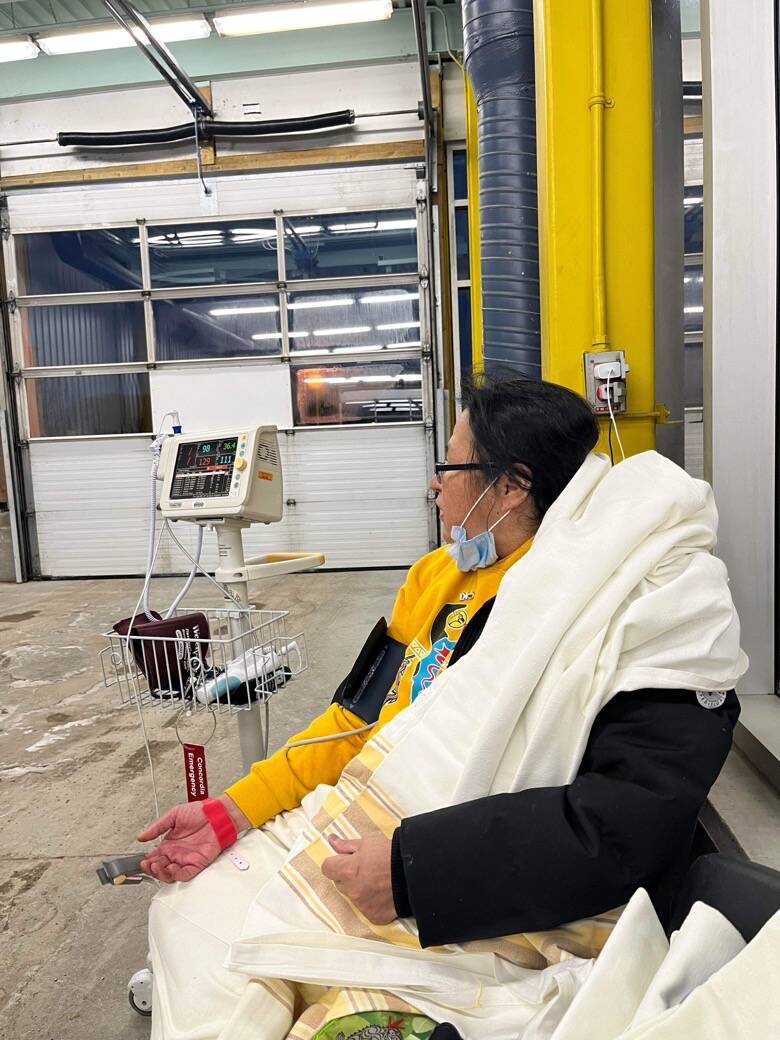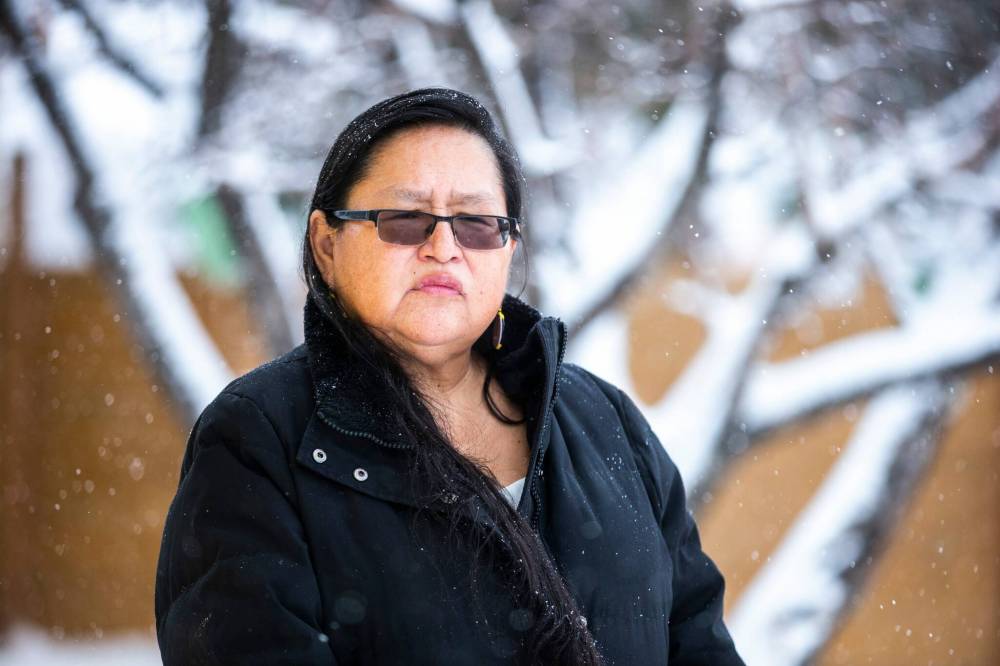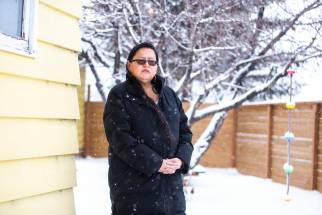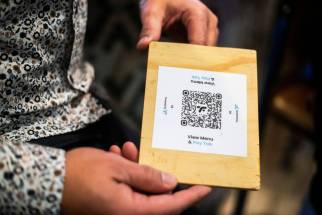Indigenous couple with pneumonia wait six hours in cold Concordia Hospital ambulance bay Wife describes ordeal as ‘post-apocalyptic’; WRHA says isolation areas inside for patients with communicable illnesses were full
Read this article for free:
or
Already have an account? Log in here »
To continue reading, please subscribe:
Monthly Digital Subscription
$0 for the first 4 weeks*
- Enjoy unlimited reading on winnipegfreepress.com
- Read the E-Edition, our digital replica newspaper
- Access News Break, our award-winning app
- Play interactive puzzles
*No charge for 4 weeks then price increases to the regular rate of $19.00 plus GST every four weeks. Offer available to new and qualified returning subscribers only. Cancel any time.
Monthly Digital Subscription
$4.75/week*
- Enjoy unlimited reading on winnipegfreepress.com
- Read the E-Edition, our digital replica newspaper
- Access News Break, our award-winning app
- Play interactive puzzles
*Billed as $19 plus GST every four weeks. Cancel any time.
To continue reading, please subscribe:
Add Free Press access to your Brandon Sun subscription for only an additional
$1 for the first 4 weeks*
*Your next subscription payment will increase by $1.00 and you will be charged $16.99 plus GST for four weeks. After four weeks, your payment will increase to $23.99 plus GST every four weeks.
Read unlimited articles for free today:
or
Already have an account? Log in here »
Hey there, time traveller!
This article was published 14/12/2022 (1088 days ago), so information in it may no longer be current.
Alison Cox and her husband say they felt like “animals in a cage” when, after going to Concordia Hospital with pneumonia, they were placed in an empty ambulance bay for six hours while they waited for medical treatment.
Cox, 55, and her 66-year-old husband — who asked not to be named — arrived at Concordia Hospital at about 12:40 p.m. Tuesday after being diagnosed with pneumonia by a family doctor. It was then, Cox said, that a triage nurse told them they would have to be isolated from other patients, but there was no space in the hospital, so they would be placed in a parking space typically used for ambulances.
“We’re alone in this ambulance bay,” Cox told the Free Press while waiting in the garage late Tuesday afternoon. “It’s like, I don’t know, post-apocalyptic, I guess, it feels like that. That’s what it feels like, apocalyptic.”
It was a dehumanizing experience for both of them — Cox’s husband tried to pace around the ambulance bay to keep warm, and only after Cox asked, a nurse brought blankets for both of them. At one point, an ambulance drove into the bay with a sick patient, who was taken into the hospital an hour later.
“I thought, OK, now we have exhaust in our lungs and we have pneumonia. I thought that wasn’t great,” she said.
The pair were too sick to try another hospital, Cox said.
“I feel frustrated and I feel angry,” she said. “We know that sometimes the care in hospitals isn’t great, because there’s just not enough beds. But we’re being left alone? That shouldn’t be happening.”
SUPPLIED Alison Cox and her husband say they felt like “animals in a cage” when, after going to Concordia Hospital with pneumonia, they were placed in an empty ambulance bay for six hours while they waited for medical treatment.
They were finally taken to a treatment room and seen by a doctor at 6:20 p.m. They were released with antibiotics and prescriptions for more medication at about 8 p.m.
A spokesperson from the Winnipeg Regional Health Authority said with the circulation of infectious illnesses — including influenza, RSV, COVID-19 and pneumonia — in the community, people who would present a possible risk of infecting others are often placed in an isolation space away from others waiting.
It happens as often as two or three times a week if other isolation spaces in hospital are filled.
“On rare occasions when all other isolation spaces are full, patients may be required to wait in the ambulance bay for a short time until they can be isolated and treated in another space, in order to keep other patients and staff safe and to prevent potential spread of infection,” the spokesperson said in an email, noting the bay has auxiliary heat and blankets are provided.
Cox, however, said repeatedly that the ambulance bay was cold while speaking with the Free Press during her six-hour wait.
“We’re in the cold. I’ve asked for blankets,” she said. “It’s kind of like they forgot about us, because you’d think they’d bring us blankets in the cold.”
NDP Leader Wab Kinew called the situation “unconscionable.”
“When you’re sick, we would expect that you could be treated quickly, in a space that provides comfort and security, including from the elements, particularly during a Winnipeg winter,” he said. “And to hear of these folks being shuffled off to a garage, to hear that they’re cold, it just completely shows the breakdown of health care under the current government.”
“It’s kind of like they forgot about us, because you’d think they’d bring us blankets in the cold.”–Alison Cox
Using every inch of a hospital as treatment space has been used to triage overfilled hospitals in the past — earlier this year, a leaked memo explained that Victoria Hospital was keeping patients who were close to being discharged with limited-care needs in hallways and staff lounges in an attempt to mitigate an intake crunch.
“I think this experience is symptomatic of a much bigger illness plaguing our health-care system, which is a lack of resources caused by political decisions over the past half-decade,” Kinew said.
“And with a challenging respiratory disease season, which I think most experts were telling us was coming we, as Manitobans, would be right to expect that more would have been done to prepare our health-care system for this so that patients such as these ones would not have to have such a an undignified experience.”
Cox said when they were finally seen, the doctor — who apologized for the length and circumstances of their wait — told them to come back if their conditions worsened.
That definitely won’t happen, she said.
MIKAELA MACKENZIE / WINNIPEG FREE PRESS Alison Cox, who was triaged with her husband in a cold hospital garage last night with pneumonia, outside of her home in Winnipeg.
The trauma of the experience kept both of them up overnight and will have lasting effects, she said.
“If you came to the windows, we would feel like animals in a cage,” she said. “If people started watching us outside the window, we’d be like animals in a cage, trying to get care.”
Cox and her husband are Indigenous, and she said she saw people who appeared to be non-Indigenous being allowed to wait in a small indoor space nearby.
She and her husband were told by nurses they would be taken inside the hospital as patient flow permitted, but instead, they went straight from the parking bay to an examination room.
“Would this kind of treatment happen to an elderly non-Indigenous couple?” she said. “That’s part of our anguish as well.”
malak.abas@freepress.mb.ca

Our newsroom depends on a growing audience of readers to power our journalism. If you are not a paid reader, please consider becoming a subscriber.
Our newsroom depends on its audience of readers to power our journalism. Thank you for your support.








